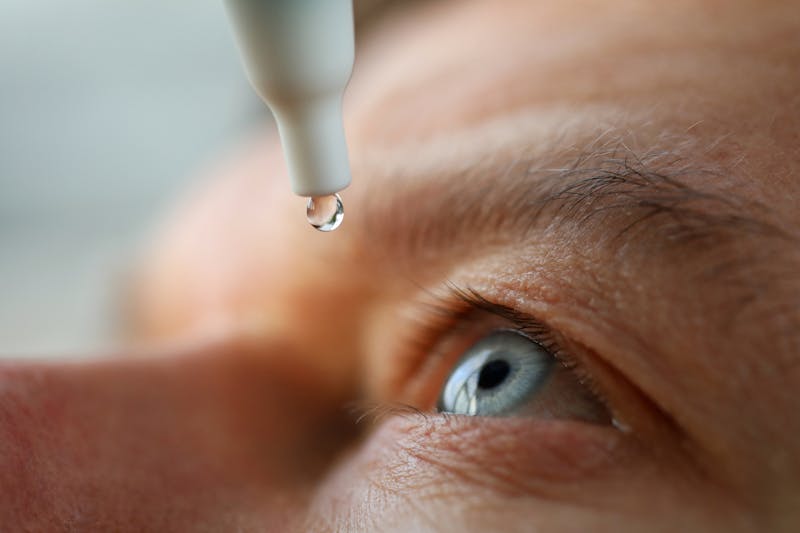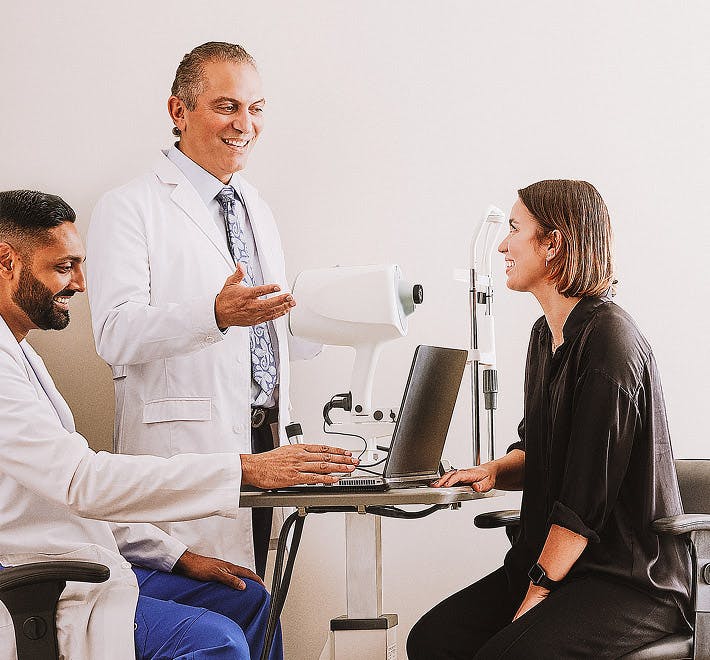Enhancing Your Vision
Guiding you toward the procedure that fits your unique needs, so you can see the world clearly and confidently.

Dry eyes affect millions of people worldwide, and if you’ve been frustrated by treatments that haven’t worked, you’re certainly not alone. A common reason for treatment failure is inaccurate diagnosis or a lack of specialized knowledge about dry eyes. In this article, we’ll explore the various causes of dry eyes, why it can be challenging for patients to find the right treatment, and how new technologies are shaping the future of dry eye care.
By the end, you’ll have a comprehensive understanding of how to manage and treat dry eyes effectively, and I’ll introduce some of the new experimental treatments that may offer relief.
Dry eye syndrome isn’t a single problem—it comes in several different types, each with its own causes and treatments. Understanding the type of dry eye you have is the first crucial step in finding the right treatment.
This type occurs when your eyes don’t produce enough tears. Tears are made up of three essential components: water, oil, and mucus. If your eyes aren’t producing enough of the watery part, they can become dry and irritated. Tear-deficient dry eye can be caused by factors such as aging, medications, or autoimmune diseases like Sjögren’s syndrome.
Evaporative dry eye happens when your tears evaporate too quickly, usually due to dysfunction in the meibomian glands, which are responsible for producing the oily layer of your tears. If these glands are blocked or not functioning properly, your tears can dry up before they’ve had a chance to properly lubricate your eyes.
Some people experience a combination of both tear-deficient and evaporative dry eye, meaning that their eyes don’t produce enough tears, and the tears that are produced evaporate too quickly.
Fortunately, there are a number of diagnostic tests that can help determine the type of dry eye you have:
Once your doctor has used these tools to diagnose your specific type of dry eye, the next step is finding the right treatment.
For many patients, eye drops are the first step in treating dry eye. But not all eye drops are created equal. Understanding the differences between over-the-counter and prescription options can help you choose the best one for your condition.
Artificial tears are designed to mimic your natural tears and provide immediate relief from dryness and irritation. There are many different formulations, ranging from thin, quick-relief drops to thicker, long-lasting ones. Popular brands include Refresh, Systane, and TheraTears. If you need to use drops frequently, preservative-free versions are available to reduce the risk of irritation.
Gel drops and ointments, such as Genteal and Refresh Gel, are thicker and provide longer-lasting relief, making them ideal for overnight use.
If over-the-counter drops aren’t providing enough relief, you may need prescription-strength options:
In addition to eye drops, there are several at-home treatments that can complement your dry eye regimen:
If home treatments aren’t enough, there are several in-office procedures that can provide relief.
Originally developed for skin treatments, IPL has been adapted for dry eye care by reducing inflammation and improving meibomian gland function. A few sessions can result in significant improvement.
LipiFlow combines heat and gentle pressure to unblock the meibomian glands, restoring their function. However, many doctors, including myself, feel that at-home heating and lid hygiene can be just as effective for many patients.
For patients with tear-deficient dry eyes, punctal plugs can be inserted into the tear ducts to block drainage, allowing more tears to stay on the surface of the eye.
For severe cases, amniotic membrane therapy can promote healing and reduce inflammation, offering relief when other treatments have failed.
Managing dry eyes involves more than just treatments; lifestyle adjustments can also make a big difference.
Staying hydrated is crucial for maintaining a healthy tear film. Drink plenty of water and incorporate foods rich in omega-3 fatty acids, such as salmon and flaxseeds, into your diet.
Poor sleep can worsen dry eye symptoms. Consider using a humidifier in your bedroom to add moisture to the air and prevent your eyes from drying out overnight.
Use air purifiers to reduce airborne irritants and make sure air vents are not directed at your face. If you work at a computer, position your screen below eye level to reduce eye exposure to air, and follow the 20-20-20 rule to reduce eye strain.
Effective dry eye management often requires a multi-faceted approach, including medication, lifestyle changes, and sometimes in-office procedures. Regular monitoring with a dry eye specialist is essential to ensure your treatment plan is effective and adjusted as needed.
Chronic dry eye doesn’t just affect your physical comfort; it can have emotional and psychological effects as well. Many patients experience anxiety, depression, or frustration due to the constant discomfort and vision problems. If dry eyes are impacting your quality of life, it’s important to seek both medical and emotional support.
By understanding the causes and treatments of dry eyes, you can take control of your eye health and explore advanced solutions that go beyond basic treatments. With the right care and a personalized plan, long-term relief is possible.
Guiding you toward the procedure that fits your unique needs, so you can see the world clearly and confidently.




If you do not see your preferred date and time please call the office, so we can accommodate your request (917) 398-4011.